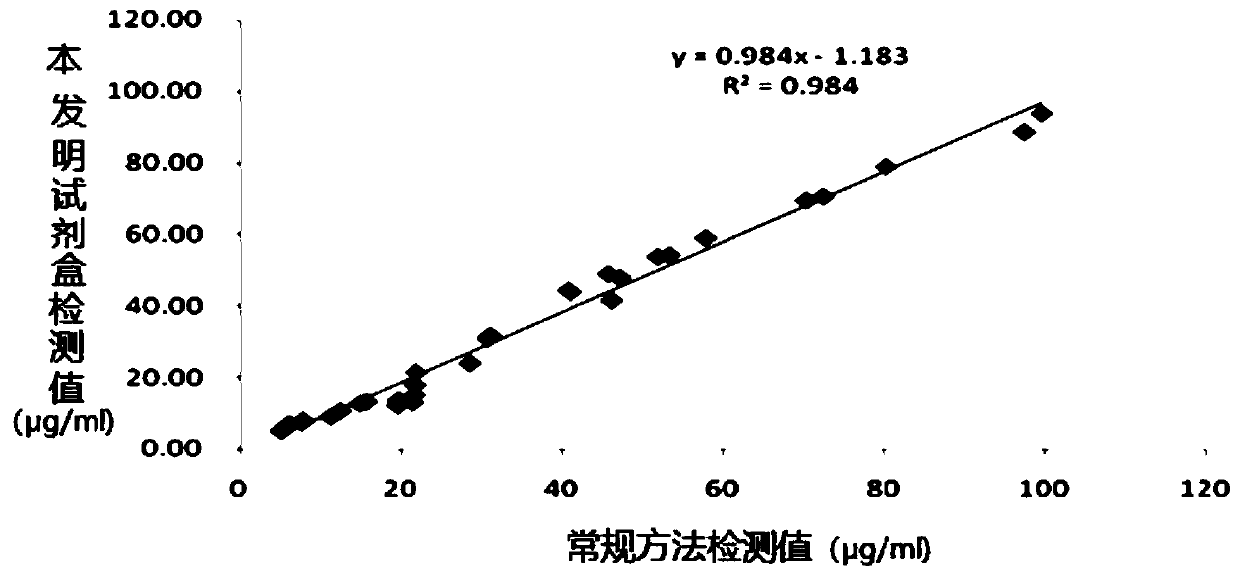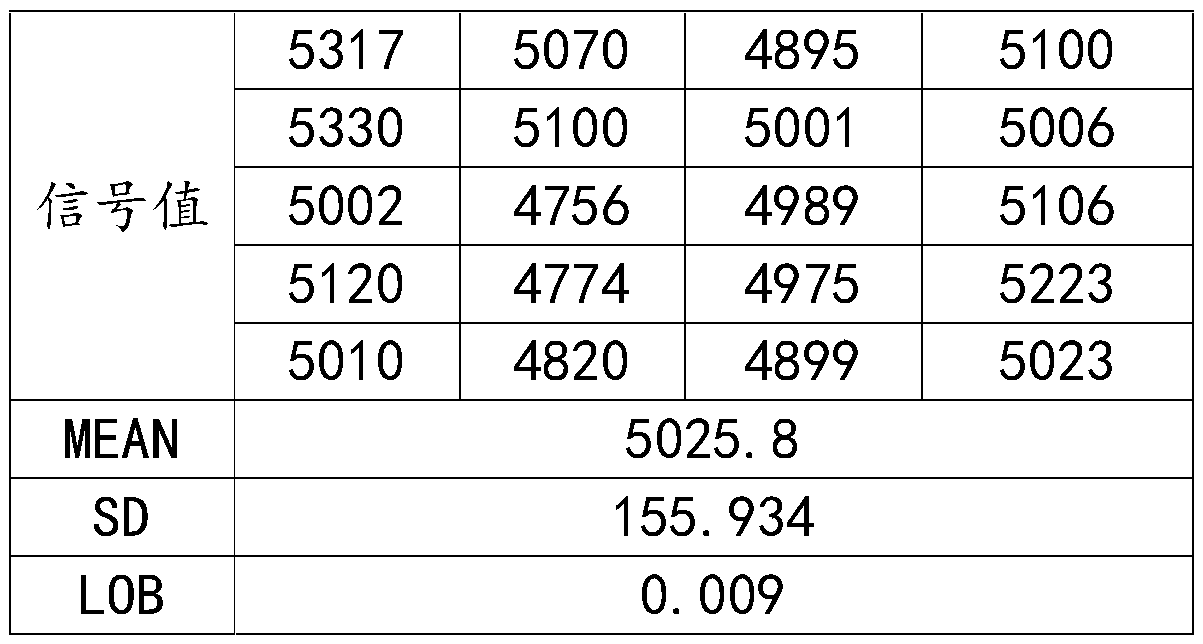Kit for quantitative detection of H-FABP and H-FABP quantitative detection method
A H-FABP, quantitative detection technology, applied in the direction of biological testing, measuring devices, material inspection products, etc., can solve the problems of high detection cost, time-consuming, poor precision and sensitivity, etc., to improve detection efficiency and accurate detection results , The effect of high detection precision
- Summary
- Abstract
- Description
- Claims
- Application Information
AI Technical Summary
Problems solved by technology
Method used
Image
Examples
Embodiment 1
[0037] Embodiment 1: Preparation of magnetic particle reagent
[0038] The magnetic particle reagent of the present invention is prepared as follows: mix 1 mg anti-H-FABP primary antibody with 100 mg MS-300 magnetic beads and 10 mg EDC, incubate at 37°C for 2 hours, collect magnetism, remove supernatant, add blocking agent CE210 , incubate at room temperature for 1H, collect magnetism, remove supernatant, add 1ml of magnetic bead preservation solution to prepare semi-finished magnetic particle reagent. Mix the prepared magnetic particle reagent semi-finished product with the magnetic bead buffer at a volume ratio of 1:50 to prepare the magnetic particle reagent. The magnetic beads in this embodiment are carboxyl-modified magnetic beads, which may also be other modified magnetic beads such as amino magnetic beads, hydroxyl magnetic beads, or mercapto magnetic beads.
[0039] The formula of the magnetic bead buffer of the present invention is: 4.58g / L TRIS, 6.81g / L NaCl, 0.1% T...
Embodiment 2
[0040] Example 2: Activation of Anti-H-FABP Secondary Antibody
[0041] Dissolve the activator 2-IT in a phosphate buffer solution with pH 7.2 to prepare a 2-IT solution with a concentration of 1.367 mg / ml, mix 2-IT and anti-H-FABP secondary antibody at a mass ratio of 1:50, After fully activating the reaction for 15 minutes, 2% by mass glycine of the anti-H-FABP secondary antibody was added to terminate the activation reaction, and then, excess 2-IT was removed by desalting using a PD10 column.
Embodiment 3
[0042] Example 3: Activation of Alkaline Phosphatase
[0043] Use DMF to prepare SMCC reagent with a concentration of 1.367mg / ml, mix SMCC reagent and alkaline phosphatase at a mass ratio of 1:50, mix well, activate the reaction for 15 minutes, and add 2% by mass of alkaline phosphatase to terminate the reaction Activate the reaction and remove excess SMCC by desalting using a PD10 column.
PUM
 Login to View More
Login to View More Abstract
Description
Claims
Application Information
 Login to View More
Login to View More - R&D
- Intellectual Property
- Life Sciences
- Materials
- Tech Scout
- Unparalleled Data Quality
- Higher Quality Content
- 60% Fewer Hallucinations
Browse by: Latest US Patents, China's latest patents, Technical Efficacy Thesaurus, Application Domain, Technology Topic, Popular Technical Reports.
© 2025 PatSnap. All rights reserved.Legal|Privacy policy|Modern Slavery Act Transparency Statement|Sitemap|About US| Contact US: help@patsnap.com



